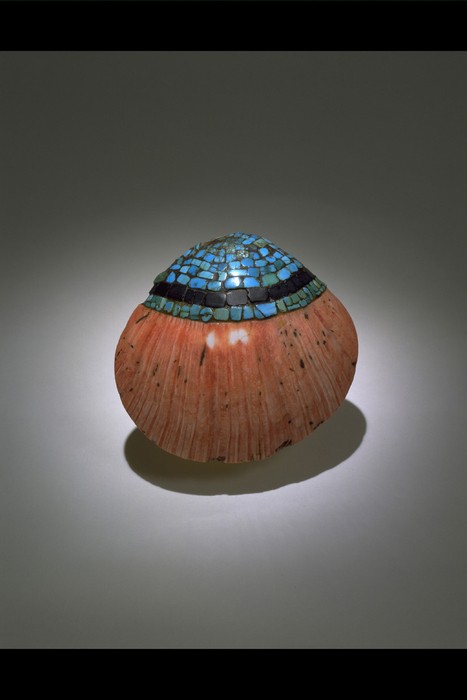Today in Smithsonian History: May 25, 1965

An exhibit case on the Anasazi, the people of the mesas and canyons, contains drawings of Pueblo Community Homes, objects of personal adornment and bone artifacts. The exhibit is on display in the North American Archaeology Exhibit, which opened in November 1962, in the National Museum of Natural History. (Photographer unknown, via Smithsonian Institution Archives)
May 25, 1965 Fire breaks out in Hall 11 of the Museum of Natural History. The loss to the building, cases and equipment is estimated at $10,000 but the loss to the museum of the specimens is irreplaceable. One case of Pueblo Indian figures, the earliest documented in the world, was totally destroyed. Another case contained religious objects from Franciscan Missions in the Southwest. The only object saved was a copper bell. Faulty electrical apparatus was believed to be the cause of the fire.

Red Mesa Black-on-White bowl illustrating birds carrying hunting nets, probably Pueblo (Anasazi), AD 875-1000
Chaco Canyon, Chaco Canyon National Historical Park; San Juan County; New Mexico; USA
Collected by George H. Pepper before 1916; purchased by the Museum of the American Indian in 1916 using funds donated by Thea (Mrs. George) Heye.
Collection of the National Museum of the American Indian

Pendant Spondylus shell/shells, turquoise, jet/lignite, probably Pueblo (Anasazi), AD 900-1200
Pueblo Bonito ruins, Chaco Canyon National Historical Park; San Juan County; New Mexico; USA
Collection history unknown, but said to have been found by a Diné (Navajo) person at Pueblo Bonito; formerly in the collection of the Fred Harvey Company (Indian arts dealers in the Southwest); purchased by the Museum of the American Indian in 1917 using funds donated by MAI trustee Harmon W. Hendricks (1846-1928).
Collection of the National Museum of the American Indian
Posted: 25 May 2019
- Categories:







